INTRO
Inter-Organizational Workflow Semantic Resolution Example: Airplane Wing Repair
As IOWF without a priori coordination remains in development, we created a synthetic collection of 13 organizations’ typical workflows and ontologies (businesses, customers and vendors in aircraft maintenance and avian veterinarian fields) to evaluate our semantic resolution mechanism. Consuming and servicing roles were distributed: IOWFs executed and coupled by the IOWFSR Mediator. From the collected corpus, emergent features, topics and word senses were identified. Using this trained corpus, potential IOWF pairings matches were evaluated: appropriate partners were selected and inappropriate ones rejected.
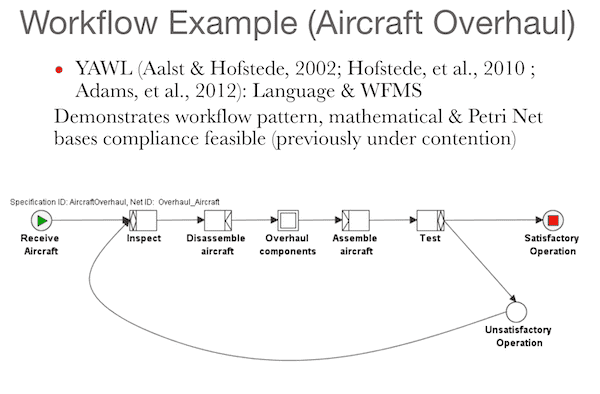
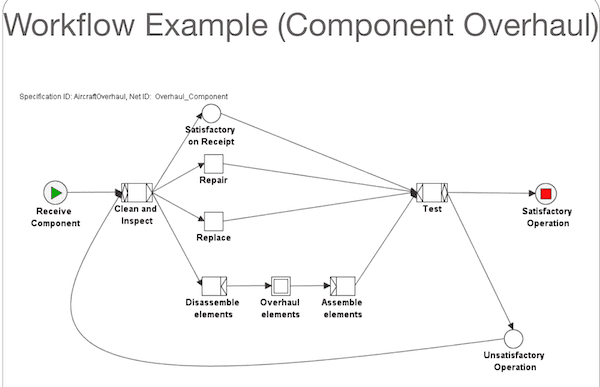
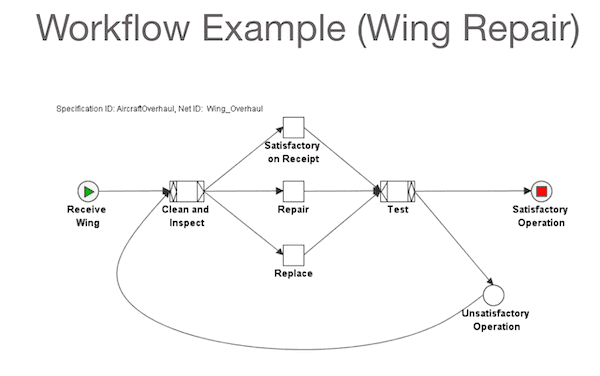
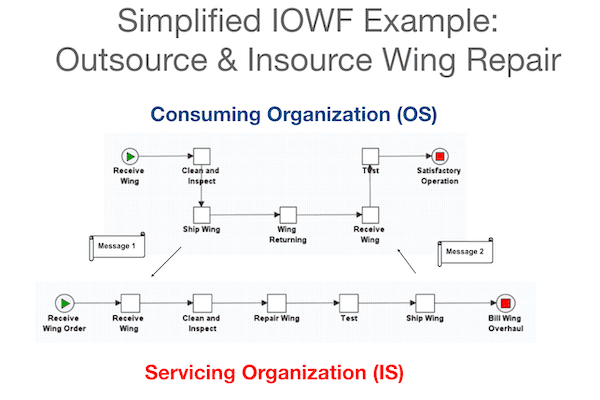
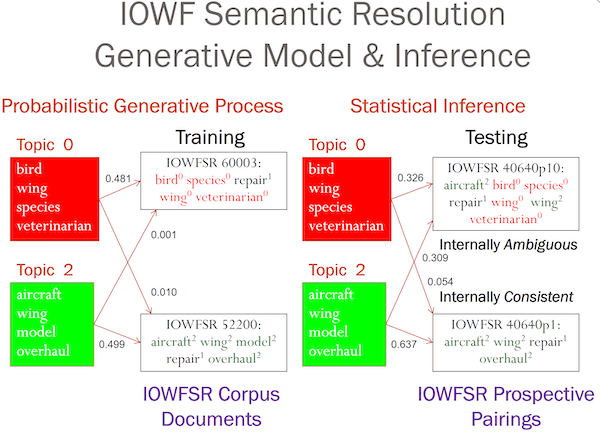
THE DETAILS
Towards Automating Inter-Organizational Workflow Semantic Resolution
CHALLENGE
-
Two (or more) organizations, without a priori knowledge of each other, attempt to automate an inter-organizational task by dividing the work between them
- Organizational differences create barriers
-
A framework needed to
- Share tasks & meanings: clearly, dynamically
- Enable & support automatic interoperability
- Constraint: Workflows expressed in Natural Language
SOLUTION
-
Concept:
- Automated workflow systems (like humans) to make sense of received information must understand terminology in context
- Not of listener, but of speaker
- Polysemous language overloads individual words’ meaning
-
Implied unique meaning(s) within organization confound outsiders
- Port: Computer Science Department vs. Nautical usage
-
Mediator design pattern solution employs:
- High level bridge encapsulating myriad workflow systems’ requisites for choreography
- Automated capture of organizations’ internal knowledge management systems, such as workflow and ontology; transforming this verbose representation into concise textual summaries
- Low level unstructured computational semantic resolution mechanism providing context